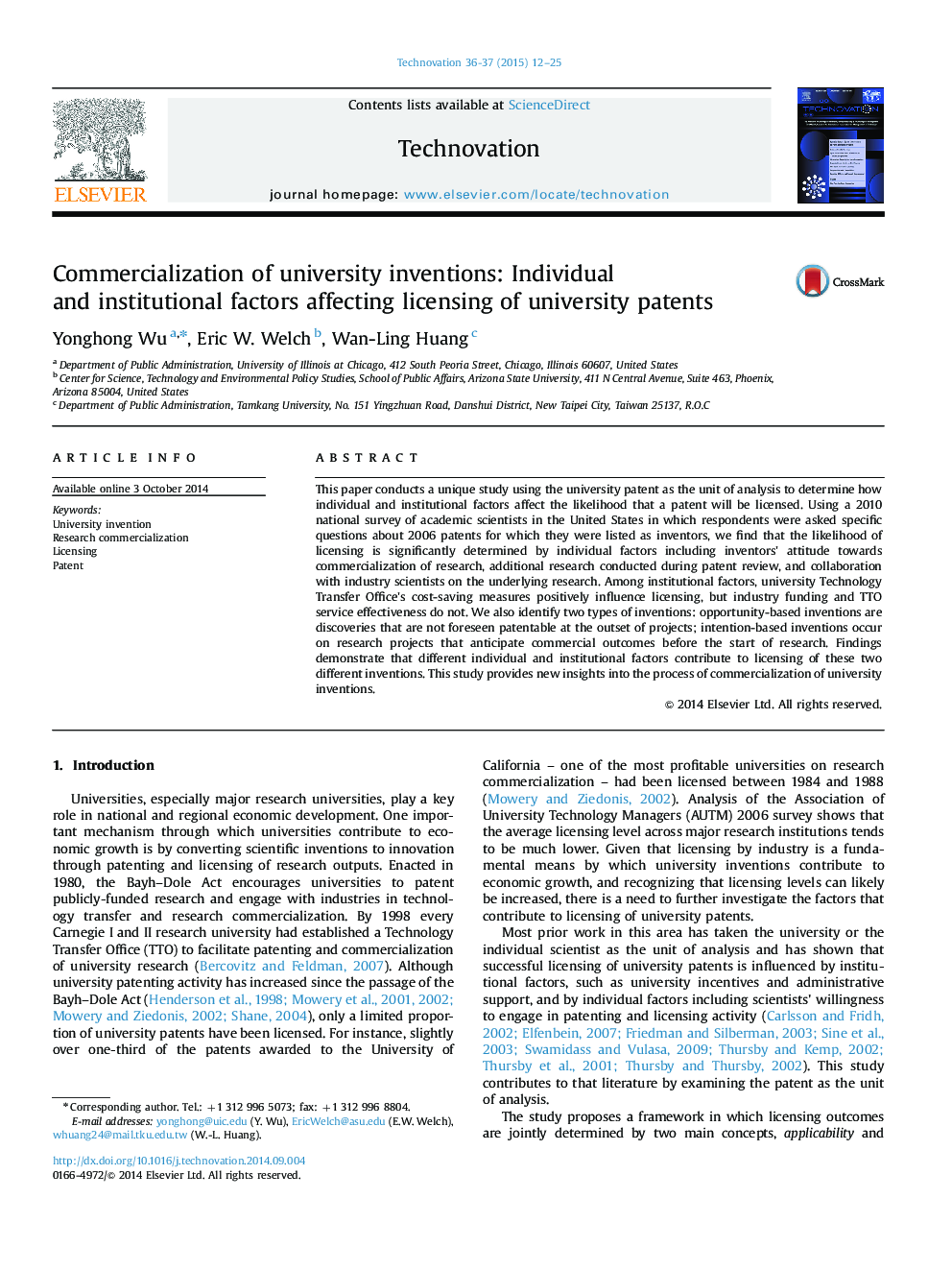| Article ID | Journal | Published Year | Pages | File Type |
|---|---|---|---|---|
| 1021838 | Technovation | 2015 | 14 Pages |
•University invention is more likely licensed if inventors have positive attitudes towards commercialization of research.•University invention is more likely licensed if inventors collaborate with industry.•University invention is more likely licensed if inventors engage in follow-up research.•University invention is more likely licensed if university TTO is cost-conscious.
This paper conducts a unique study using the university patent as the unit of analysis to determine how individual and institutional factors affect the likelihood that a patent will be licensed. Using a 2010 national survey of academic scientists in the United States in which respondents were asked specific questions about 2006 patents for which they were listed as inventors, we find that the likelihood of licensing is significantly determined by individual factors including inventors׳ attitude towards commercialization of research, additional research conducted during patent review, and collaboration with industry scientists on the underlying research. Among institutional factors, university Technology Transfer Office׳s cost-saving measures positively influence licensing, but industry funding and TTO service effectiveness do not. We also identify two types of inventions: opportunity-based inventions are discoveries that are not foreseen patentable at the outset of projects; intention-based inventions occur on research projects that anticipate commercial outcomes before the start of research. Findings demonstrate that different individual and institutional factors contribute to licensing of these two different inventions. This study provides new insights into the process of commercialization of university inventions.
